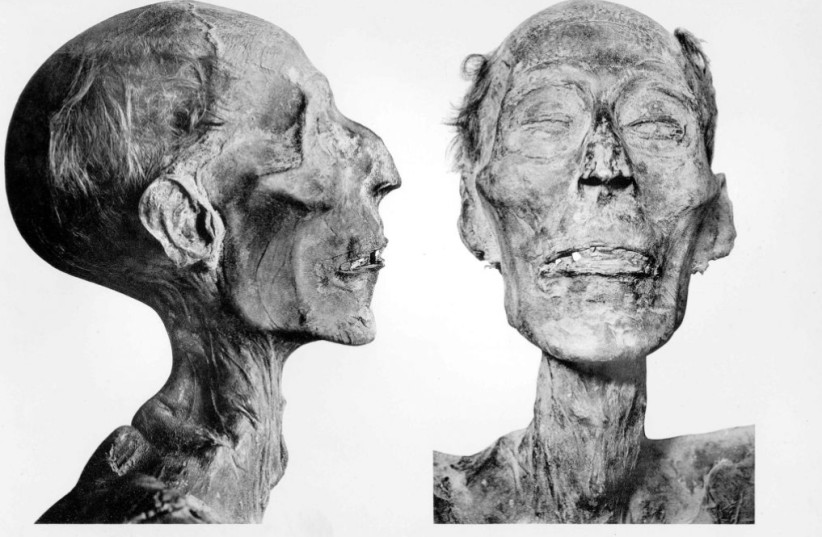New tech shows what Rameses II's face looked like
New facial rendering software was combined with software used to identify criminals and victims in the UK for the project.
Scientists were able to reconstruct a facial rendering of Rameses II, the Pharaoh responsible for enslaving the Jews in the Book of Exodus, based on his mummified remains. This reverse-age rendering was made possible by the UK-based Liverpool John Moores University Face Lab.
The Pharaoh Rameses II was believed to have died in his 90s, but his facial rendering shows him as he was projected to look in his 40s. Researchers were able to create a three-dimensional age regression to reverse signs of aging to depict him as in his 40s - just when he had reached the highest point of his reign of power.
According to radiology professionals involved with the research project from Cairo University, Rameses II was quite a handsome fellow. In a radiology magazine, professor Sahar Saleem said that "Bringing Rameses' face to life in his old age and as a young man reminds the world of his legendary status." He was in power for 66 years.
Facial depiction of Ramses II (2022)
Rameses II’s mummy can be found at the National Museum of Egyptian Civilization in Cairo, Egypt today. After its discovery in 1881 near the southern Egyptian city of Luxor, the remains were partially unwrapped to be examined by researchers.
To create the most recent rendering, professor Saleem created a 3D virtual model of his head and skull from a CT scan which took thousands of X-rays and created an image from them all. Researchers in Liverpool then used the results of the 3D image to reconstruct his features with a software frequently used to identify people of interest in criminal investigations.

Modern technologies help create modern faces
Researchers then used computer-generated imagery (CGI) to give their image skin and hair. Based on common features of others in the region at the time, researchers were able to create a realistic image of how he would have looked. They also used "facial approximation" to create a potential head shape based on a series of other skulls found at the time.
Though the Pharaoh who persecuted Moses and the Israelites is never outwardly named in the Bible, historians believed it to be Rameses II, or Rameses the Great. He was a celebrated ruler at the peak of Egyptian power in the 13th century BCE.


No comments:
Post a Comment
Stick to the subject, NO religion, or Party politics